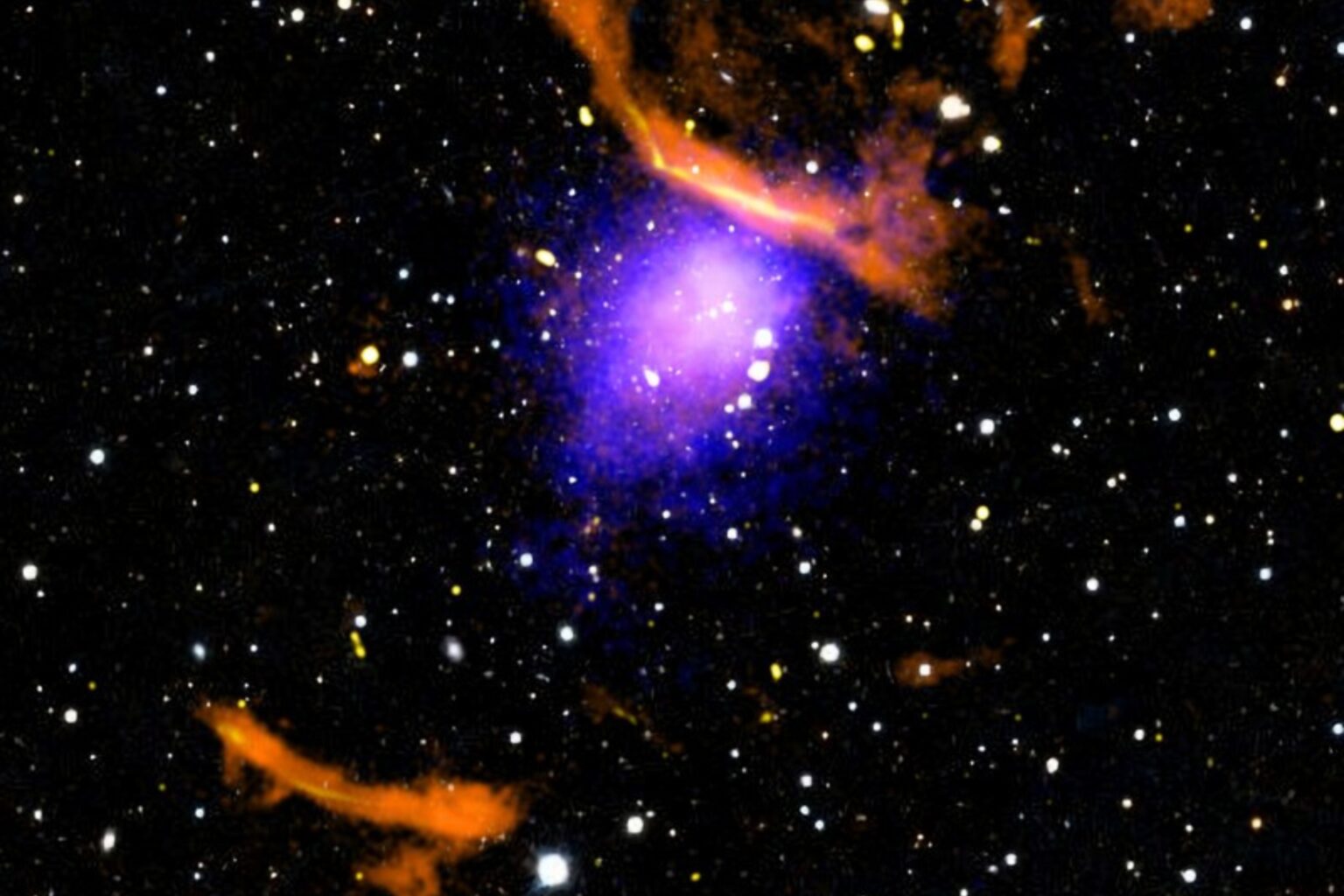Astronomers have smashed the record for the largest-known cloud of energetic particles discovered surrounding a galactic cluster—and the find could shake up established physics.
The cluster in question, which has the catchy name of “PLCK G287.0+32.9,” lies some 5 billion light-years from Earth.
The cloud around it is nearly a whopping 20 million light-years across—about 20 times the diameter of our Milky Way galaxy—beating the previous record holder, seen around cluster Abell 2255, which spanned only 16.3 million light-years.
PLCK G287.0+32.9 was first spotted in 2011, with studies revealing that the cluster’s edges were lit up by two giant shockwaves.
The study was led by astronomer Kamlesh Rajpurohit of the Center for Astrophysics | Harvard & Smithsonian, in Cambridge, Massachusetts.
“We expected a bright pair of relics at the cluster’s edges, which would have matched prior observations, but instead we found the whole cluster glowing in radio light,” Rajpurohit said in a statement.
She added: “A cloud of energetic particles this large has never been observed in this galaxy cluster or any other.”
In addition, when the team peered deep into the cluster’s central region, they also detected a radio halo some 11.4 million light-years across—the first of this size seen at the 2.4 gigahertz frequency, at which such large halos are not normally visible.
“Very extended radio hales are mostly only visible at lower frequencies because the electrons that produce them have lost energy—they’re old and have cooled over time,” explained Rajpurohit.
“With the discovery of this enormous halo, we are now seeing radio emission extending all the way between the giant shocks and beyond, filling the entire cluster.
“That suggests something is actively accelerating or reaccelerating the electrons, but none of the usual suspects apply.
“We think that giant shockwaves or turbulence could be responsible, but we need more theoretical models to find a definitive answer.”
In the cluster’s center, the team explained, this activity could be the result of the merger of two smaller galactic clusters, outbursts from a supermassive black hole, or both combined.
According to the researchers, the discovery provides us with a new means to examine cosmic magnetic fields—and could help astrophysicists unpick how magnetism shapes the universe on the biggest of scales.
“We’re starting to see the universe in ways we never could before,” said Rajpurohit.
“That means rethinking how energy and matter move through its largest structures.”
The full findings of the study were presented on Monday at the 246th meeting of the American Astronomical Society, which is being held in Anchorage, Alaska, from 8–12 June.
Do you have a tip on a science story that Newsweek should be covering? Do you have a question about astronomy? Let us know via science@newsweek.com.
Reference
Rajpurohit, K., Botteon, A., O’Sullivan, E., Forman, W., Balboni, M., Bruno, L., van Weeren, R. J., Hoeft, M., Brunetti, G., Jones, C., Rajpurohit, A. S., & Sikhosana, S. P. (2025). Radial Profiles of Radio Halos in Massive Galaxy Clusters: Diffuse Giants Over 2 Mpc. arXiv. https://doi.org/10.48550/arXiv.2505.05415
Read the full article here

